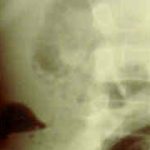Blunt injury to hollow organs is rare in adults, but a little more common in children. This is due to their smaller muscle mass and the lack of protection by their more flexible skeleton. Duodenal injury is very rare, and most trauma professionals don’t see any during their career. As with many pediatric injuries, there has been a move toward nonoperative management in selected cases, and duodenal injury is no exception.
What we really need to know is, which child needs prompt operative treatment, and which ones can be treated without it? Children’s Hospital of Boston did a multicenter study of pediatric patients who underwent operation for their injury to try to tease out some answers about who needs surgery and what the consequences were.
A total of 16 children’s hospitals participated in this 4 ½ year study. Only 54 children had a duodenal injury, proven either by operation or autopsy. Some key points identified were:
- The injury was very uncommon, with one child per hospital per year at best
- 90% had tenderness or marks of some sort on their abdomen (seatbelt sign, handlebar mark, other contusions).
- Free air was not universal. Plain abdominal xray showed free air in 36% of cases, while CT showed it only 50% of the time. Free fluid was seen on CT in 100% of cases.
- Contrast extravasation was uncommon, seen in 18% of patients.
- Solid organ injuries were relatively common
- Amylase was frequently elevated
Although laparoscopic exploration was attempted in about 12% of patients, it was universally converted to an open procedure when the injury was confirmed. TPN was used commonly in the postop period. Postop ileus was very common, but serious complications were rare (wound infection <10%, abscess 3%, fistula 4%). There were 2 deaths: one child presented in extremis, the other deteriorated one day after delayed recognition of the injury.
Bottom line: Be alert for this rare injury in children. Marks on the abdomen, particularly the epigastrium, should raise suspicion of a duodenal injury. The best imaging technique is the abdominal CT scan. Contrast is generally not helpful and not tolerated well by children. Duodenal hematoma can be managed nonoperatively. But any evidence of perforation (free fluid, air bubbles in the retroperitoneum, duodenal wall thickening, elevated serum amylase) should send the child to the OR. And laparotomy, not laparoscopy, is the way to go.
Related posts: Personal case – duodenal injury in a child
Reference: Operative blunt duodenal injury in children: a multi-institutional review. J Ped Surg 47(10):1833-1836, 2012.

